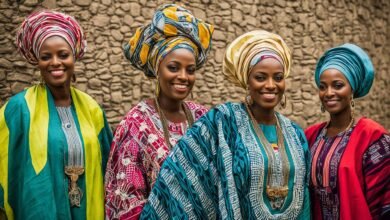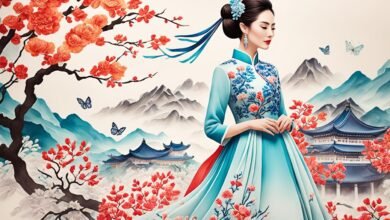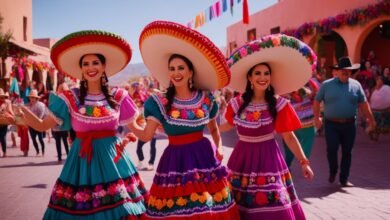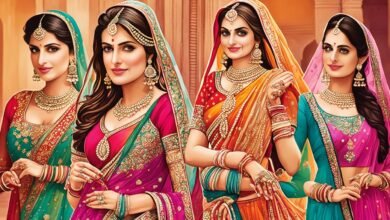Table of Contents
Have you felt how clothing can link you to your roots and fill you with cultural pride? Traditional Polish clothing does this well. It’s not just about fashion; it’s about your identity and where you’re from. Its lively colors and detailed embroidery celebrate Polish culture.
Exploring Polish folk costumes is like entering a woven story. You will see designs and craft that have been handed down. You might feel the past lives and love for Poland in every stitch. It connects you with ancestors who held their heritage dear through the ages.
Traditional Polish clothing holds deep meaning beyond its looks. It’s alive in Poland’s life, appearing proudly at special events. The beauty of a Polish folk costume can enchant anyone, showing the culture’s strength and spirit.
Wearing such attire means you carry Polish culture forward. You honor your forebears and their efforts to keep their ways alive. In this way, you are a beacon of Polish heritage in today’s world.
Let’s explore the amazing world of Polish fashion together. From its ancient roots to modern trends, we will see how it evolved. We will also learn about the sustainable values of Polish designers. By examining the diversity of Polish folk costumes, we will understand their unique cultural tales. And we will see how Polish-Americans keep their heritage vibrant for the future.
Embark with us on this journey, celebrating traditional Polish clothing’s splendor, history, and cultural importance. Allow the brilliant colors and detailed designs to take you into a place where culture, tradition, and style blend together beautifully.
The Evolution of Traditional Polish Fashion
Over the years, Polish fashion has changed a lot, especially after the communist rule ended. Designers from Poland have mixed old style with new looks very well. This has made Poland’s fashion scene stand out.
Designers like Ania Kuczyńska and Gosia Baczynska have been key in this change. They use old Polish clothes as inspiration for their new, modern designs. This shows off Poland’s rich cultural history.
“I draw inspiration from traditional Polish clothing because it tells a story and evokes a sense of national identity while still being relevant in a modern context.” – Ania Kuczyńska
Bringing together tradition and new ideas, Polish fashion has become well-known worldwide. Their designs have been shown at top fashion shows, impressing many. Polish designers have not only made Poland’s mark in fashion but also shown a unique style that is loved.
This change in fashion has helped Poland’s cultural fashion stay important and exciting in today’s quick fashion world.
Polish Designers Making Waves
Ania Kuczyńska is famous for her simple and well-designed outfits. She combines old Polish looks with new styles quite easily. Her designs have been seen at many international events, like Paris Fashion Week.
Gosia Baczynska is a big name in Poland too. She mixes old fabrics with new designs in a way that’s both modern and rooted in tradition. Her work is known worldwide, making her a top figure in Polish fashion.
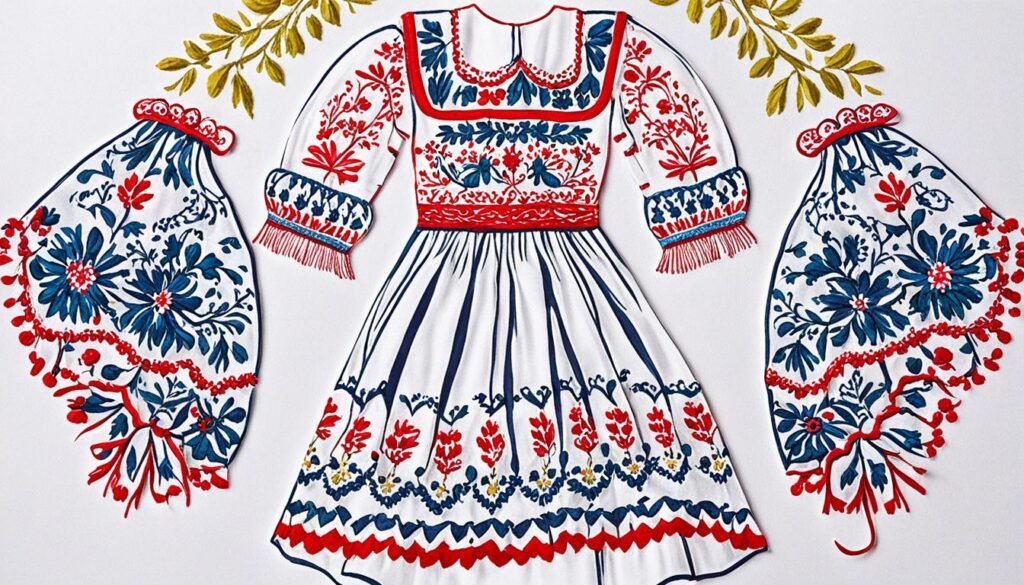
The Impact of Traditional Polish Fashion
The change in Polish fashion has not only influenced the industry but also made people more interested in their culture. Designers in Poland have modernized traditional clothes. This has made these pieces easy to like and wear for many more people. It’s a great way to keep Polish traditions alive.
“Traditional Polish fashion allows us to connect with our roots and express our national identity in a contemporary way. It celebrates our rich heritage and keeps our traditions alive.” – Gosia Baczynska
This mix of old and new in Polish fashion shows how innovative the industry is. People who love fashion all over the world are noticing Poland’s unique style. This is making traditional Polish fashion known across the globe.
| Traditional Polish Fashion Today | Key Features |
|---|---|
| Polish Folk Attire | Colorful embroidery, floral patterns, and regional variations. |
| Traditional Polish Clothing | Mixing traditional elements with modern cuts and fabrics. |
| Polish Cultural Dress | Emphasizes national and regional identity in contemporary fashion. |
Sustainable Practices in Polish Fashion
Sustainability is currently a big focus in the traditional and folk fashion of Poland. This shift towards ethical practices and sustainable materials is led by Polish designers.
The adoption of slow fashion is a significant approach. It involves moving away from fast trends. Instead, designers create timeless clothing meant to be worn for many years.
Using recycled and organic materials is another vital part of sustainable fashion in Poland. Designers are finding new ways to reuse materials. This helps reduce waste and the fashion industry’s impact on the environment. Plus, it leads to the creation of fashion pieces that reflect Poland’s tradition with a modern twist.
“Sustainability is at the core of our designs. Our goal is to make clothes that are not just beautiful but also kind to the earth,” says Pat Guzik. She’s a well-known designer from Poland, recognized for her eco-friendly designs with the EcoChic Design Award.
But the sustainability effort in Polish fashion isn’t just from designers. For instance, Fashion Revolution Poland is making big strides in promoting transparency and ethics. This is achieved through bringing together the fashion community to make more thoughtful and responsible choices.

| Sustainable Practices in Polish Fashion | Description |
|---|---|
| Slow Fashion | Designers focus on creating clothes that last, aiming to reduce waste and unnecessary consumption. |
| Recycled Materials | By reusing materials, designers breathe new life into old fabrics and lower fashion’s harm on the environment. |
| Organic Materials | Designers use organic materials to help the planet and encourage the protection of natural resources. |
| Fashion Revolution Poland | This initiative is dedicated to improving how the Polish fashion industry approaches transparency and ethics. |
Polish designers and these sustainable efforts are shaping the future of fashion. This future is one where beauty and care for our planet go hand in hand.
Celebrating Regional Diversity in Polish Folk Costumes
Each part of Poland has its own folk dress. These outfits show off the area’s culture and history. They’re bright and detailed, telling unique stories. For example, Krakow’s outfits are different from those in Podhale. But they all share Poland’s varied traditions in a colorful way.
The area around Krakow, in the south, is famous for its colorful vests. These vests are hand-embroidered and very detailed. They’re often worn at special events, showing the wearer’s pride. They bring a special elegance to any party, reflecting Krakow’s rich heritage.
In the mountainous Podhale region, the people are called highlanders. They have a traditional coat called “ciupaga.” These coats are made of warm wool and have intricate designs on them. They help the highlanders stay warm in the cold. The clothes there show how these people are resourceful and strong, keeping their traditions alive through dressing.
Now, let’s compare Krakow and Podhale’s traditional dresses:
| Krakow Region | Podhale Region |
|---|---|
| Vibrant embroidery | Intricate patterns |
| Colorful vests | Warm, woolen coats |
| Elegant and refined | Resilient and practical |
In the Krakow and Podhale regions, traditional outfits serve different functions. Krakow’s outfits stand out with their colors and embroidery. Meanwhile, Podhale’s outfits are more about staying warm. But both places deeply value the traditions shown through their clothing.
Across Poland, traditional clothes are very important. People wear them with great pride. These outfits are more than just clothing. They are a way to show regional diversity and cultural pride. The polish folk attire really brings out the special traditions and spirits of each area, being key to Poland’s lively folk culture.
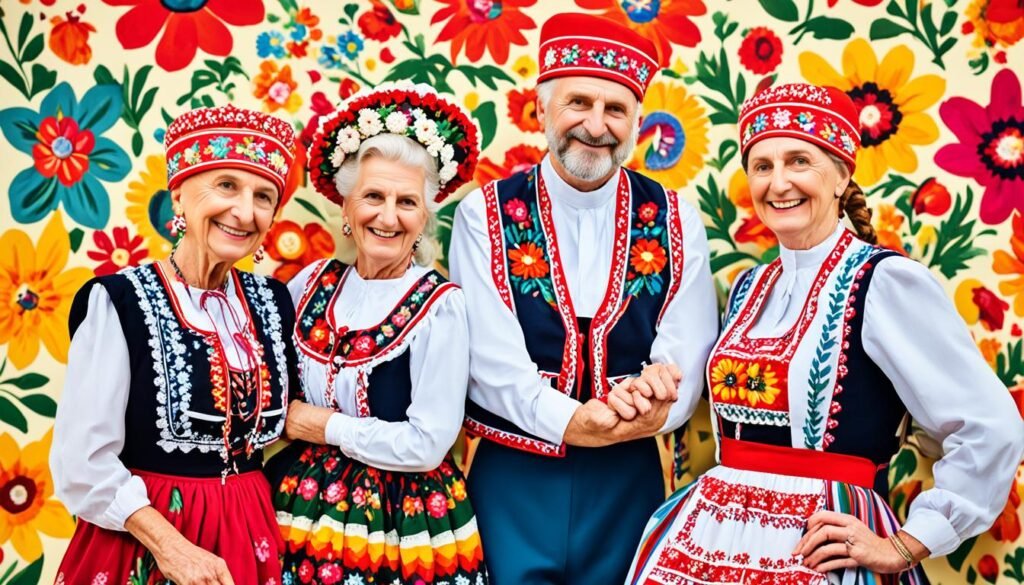
Traditional Attire from Lesser-Known Polish Regions
Polish traditional dress isn’t just from famous places like Krakow or Podhale. Lesser-known areas, like Lubusz and Kuyavia, also have a deep history of folk clothing. These places have their own style due to their unique history of colonization. This history is shown in their colorful and detailed outfits.
In Lubusz, you see the mix of Polish, German, and Czech styles in the clothes. Bright colors and detailed embroidery mark these outfits. They tell the story of the region’s survival and its rich past.
Kuyavia’s clothing is closely linked to its strong Catholic faith. The clothes, decorated with fine lace and ribbons, are for special religious events. Their detail shows the area’s deep Catholic roots.
“The costumes from these lesser-known regions not only represent garments but also serve as emblematic symbols of the heritage and identity of each Polish region.” – Your Name
Studying the outfits from Poland’s lesser-known areas gives a broad view of its cultures. These outfits speak to Poland’s varied past and rich fashion. They show how the nation’s heritage is celebrated in different ways.
Let’s focus on the traditional clothes from Lubusz and Kuyavia.
| Lubusz | Kuyavia |
|---|---|
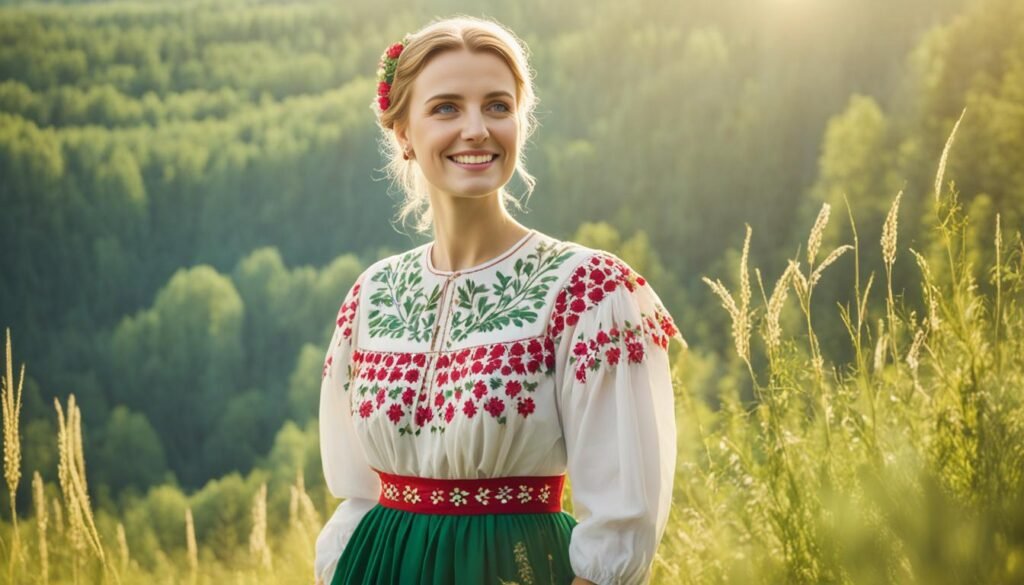
Lubusz: Clothes from Lubusz are full of vibrant colors and detailed parts. They mix Polish, German, and Czech influences. This makes their clothing unique and beautiful. |
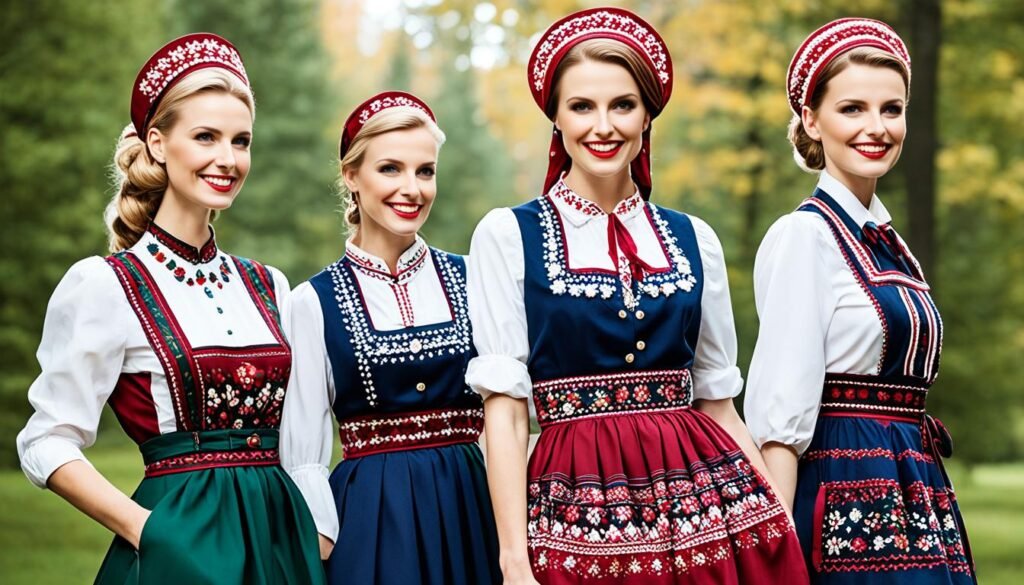
Kuyavia: Kuyavia’s outfits shine with lace and ribbons. They are for religious events and show the region’s deep faith. Their beauty tells a story of strong traditions. |
Learning about traditional clothing from less-known Polish places reveals the country’s rich culture. It shows how their clothes are more than just fabric. They are a work of art and a connection to Poland’s past.
The Fascination of Polish Highlander Clothing
The outfit of the Polish highlanders, called “goralskie,” shows their rich cultural identity. It comes from a region in southern Poland called Podhale. This attire shows their love for their heritage and the beauty of their mountain homes.
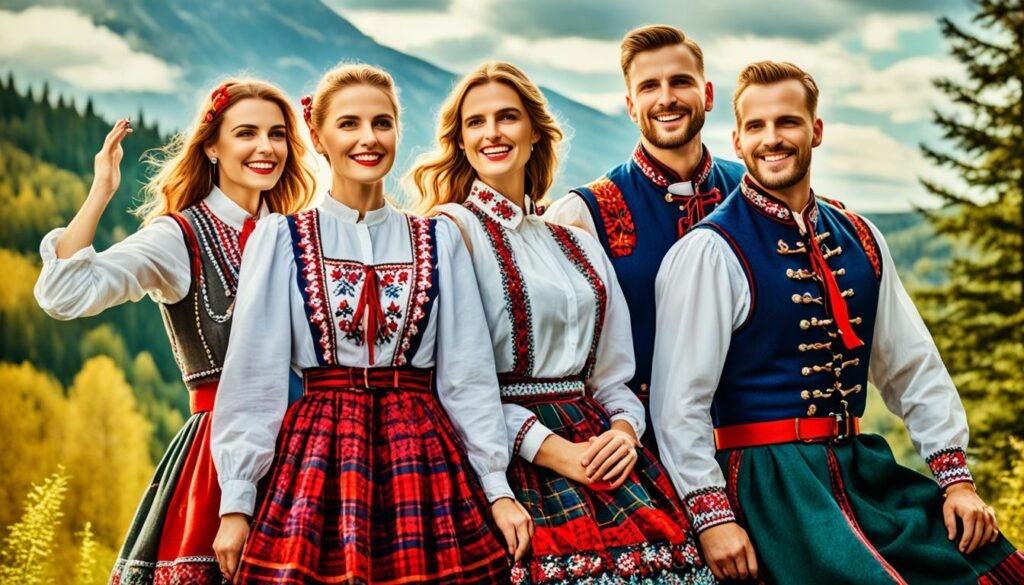
Goralskie clothing is special because of its detailed embroidery and bright colors. Men wear wool vests with fancy buttons and stitching. They also wear leather belts, patterned pants, and strong boots. Women wear blouses, skirts, and colorful vests known as “bogdanowka.”
“The traditional highlander clothing is not just a fashion statement; it is a symbol of our heritage and the pride we have for our region. Wearing the goralskie attire is a way to connect with our ancestors and showcase our rich cultural traditions.” – Anna Kowalska, a proud Polish highlander
Highlanders wear their traditional outfits every day, not just for special events. The clothes are known for being detailed and colorful, making them visually striking.
To really see the beauty of this clothing, you need to understand its history and meanings. The designs often show local plants and animals. This shows how connected the highlanders are to nature. These traditions and designs have been around for many years, passed down from generation to generation.
The Significance of Authentic Polish Clothing
Authentic Polish clothing, like goralskie attire, is very important for keeping the culture alive. It links the people of today to their ancestors. By wearing these clothes, Polish people respect their heritage and culture.
The beauty of Polish highlander clothing is loved by people all over the world. Fashion designers and fans are drawn to the unique aspects of these clothes. The detailed work and bright colors continue to influence modern fashion, showing the lasting charm of Polish traditional wear.
| Key Features | Meaning |
|---|---|
| Intricate Embroidery | Depicting local flora and fauna, symbolizing the highlanders’ connection to nature |
| Colorful Patterns | Representing joy, vitality, and the celebration of life |
| Handwoven Fabrics | Showcasing the highlanders’ craftsmanship and dedication to preserving traditional techniques |
| Traditional Accessories | Reflecting the highlanders’ customs, beliefs, and cultural heritage |
The interest in Polish highlander clothing is increasing, as more people see its value. Whether worn by the highlanders or celebrated by fans worldwide, these clothes remind us of the lasting beauty and pride of Polish traditions.
The Prestigious Kraków Costume
The Kraków region costume is very important in Polish fashion history. It is known because of Tadeusz Kościuszko, a key figure in Poland’s past. This outfit, including items like the sukmana and rogatywka caps, was later worn by Polish fighters for freedom.
“The Kraków costume is not just a testament to our regional pride, but it represents the spirit of rebellion and resilience that runs deep within the Polish culture.” – Anna Nowak, Kraków native and cultural historian
The sukmana is a long, beautifully embroidered coat. It’s a key part of the Kraków outfit. Its bright colors and patterns show the rich culture of the area. The rogatywka cap, with a peacock feather, symbolizes the nobility of Kraków.
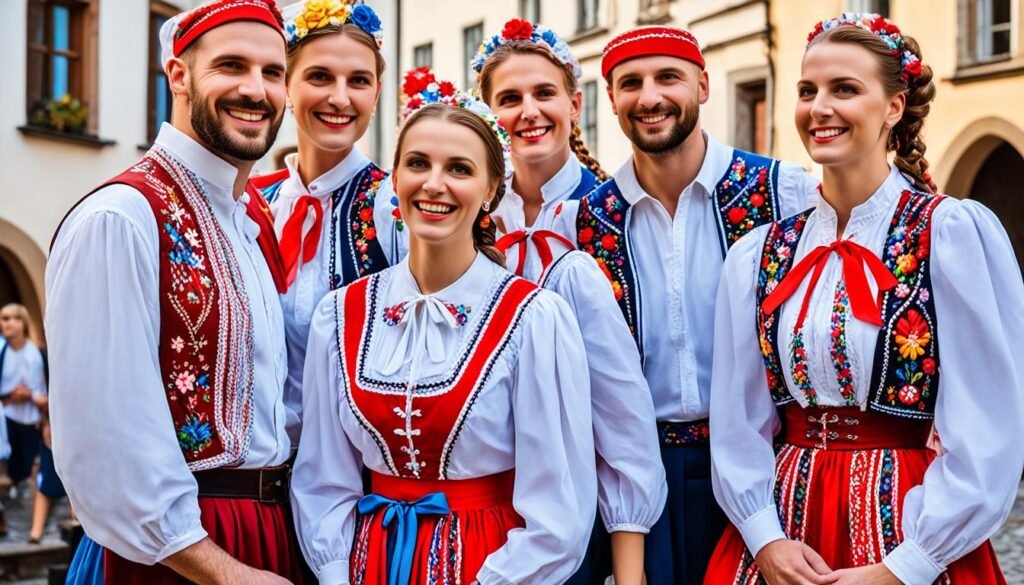
This outfit is still very important in today’s Poland. People wear it proudly at events like festivals and weddings. It shows off the Polish fashion beautifully. The Kraków outfit means more than just traditional dress. It stands for unity and love of tradition, inspiring new fashion trends.
“The Kraków costume is a true masterpiece, blending rich tradition with timeless elegance. It is an embodiment of our cultural identity and a testament to craftsmanship and creativity of Polish artisans throughout history.” – Maria Kowalska, Polish fashion designer
Cultural Diversity in Wielkopolska Attire
Wielkopolska is in western-central Poland and it’s full of cultural richness. Every sub-region here has its unique style of traditional clothing. This shows the varied beauty of Polish fashion.
In Biskupizna, beautiful headdresses are very important. They’re decorated with detailed designs that tell the area’s history and culture. The people making these headpieces show great artistry and skill.
When you visit Szamotuły, you’ll see stunning embroidery on the clothes. This embroidery is full of patterns and motifs that have deep meanings. It’s a way to celebrate the region’s mix of different cultures over time.
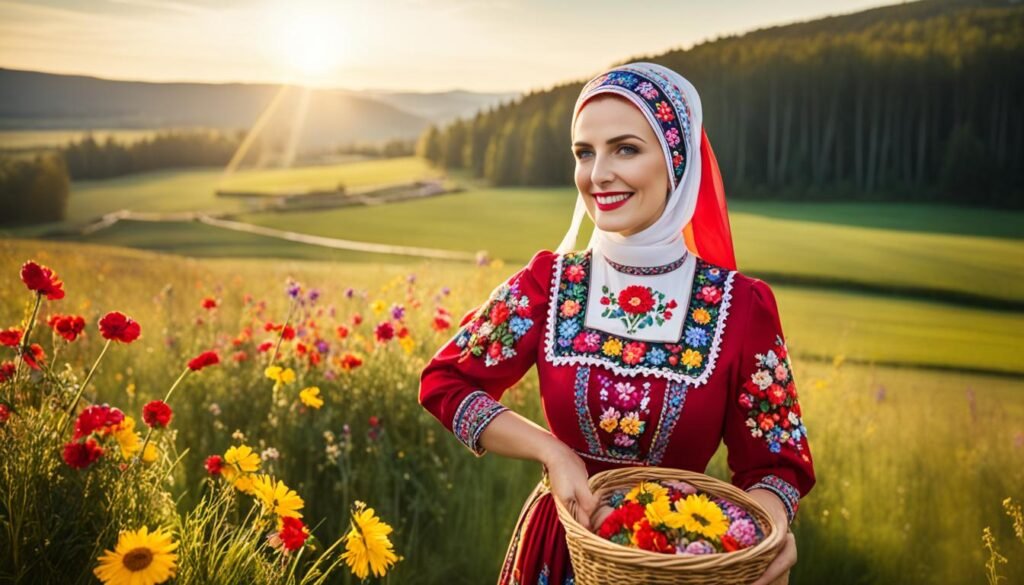
The traditional clothes of Wielkopolska tell a story of rich history and customs. Each piece is like a badge of honor, showing the region’s cultural variety. The people here are proud to keep their heritage alive this way.
Preserving Polish Culture through Festivals and Events
Join the lively world of Polish culture at events like the Polish Harvest Festival. Here, Polish-Americans show their roots proudly with old-fashioned clothing, music, and meals. These events let you see the real beauty in Polish traditional clothing.
Music and dances bring tradition to life at these festivals. Traditional Polish songs and dances echo throughout, adding to the vibrant atmosphere. The clothes people wear tell the story of Poland, full of bright colors and flower designs.
The smell of traditional foods wafts through the air, making your mouth water. Eating pierogi, gołąbki, and kiełbasa isn’t just tasty but ties you to your heritage. These dishes are a key part of what keeps Polish culture alive.
Events like the Polish Harvest Festival help Polish-Americans remember their past. They share their culture with others, making sure these traditions go on. This care for authentic Polish clothing and cultural dress keeps the tradition’s beauty alive for the future.
